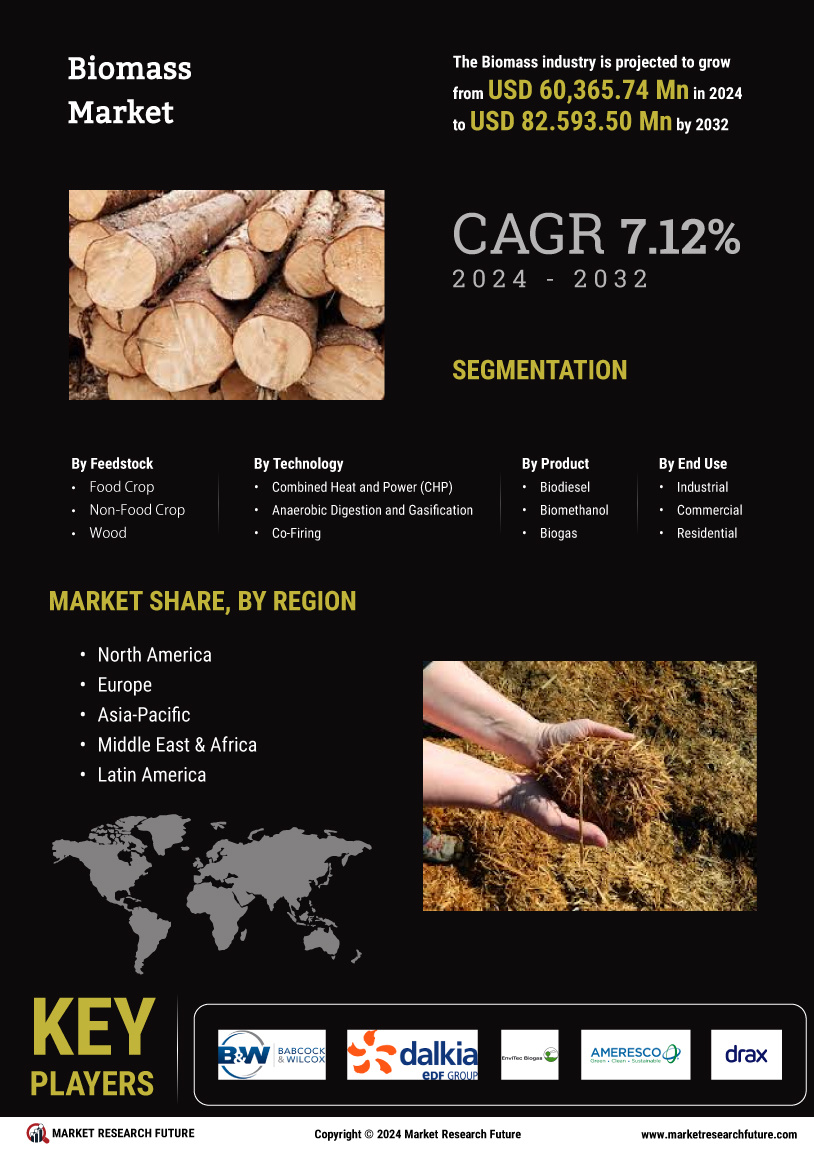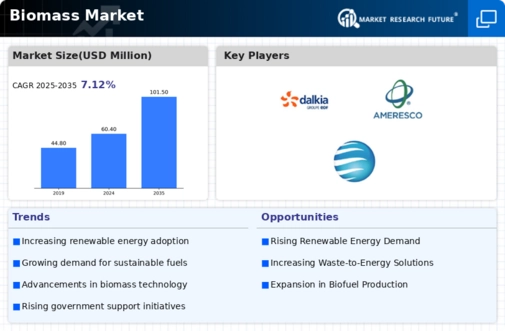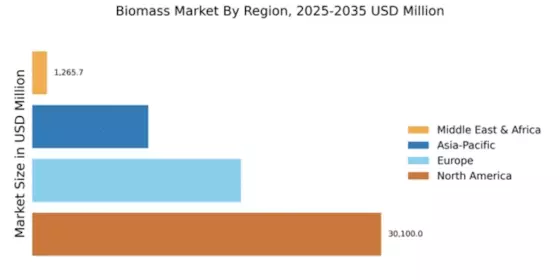Market Growth Projections
The Global Biomass Market Industry is poised for substantial growth, with projections indicating a market size of 60.4 USD Billion in 2024 and an anticipated increase to 101.5 USD Billion by 2035. This growth trajectory suggests a robust expansion driven by various factors, including rising energy demands, technological advancements, and supportive government policies. The compound annual growth rate of 4.84% from 2025 to 2035 further emphasizes the market's potential. Such projections highlight the increasing recognition of biomass as a critical component of the global energy mix, reinforcing its role in achieving energy security and sustainability.
Growing Environmental Concerns
Increasing environmental concerns regarding greenhouse gas emissions and pollution are propelling the Global Biomass Market Industry. Biomass Market is perceived as a cleaner alternative to fossil fuels, as it can significantly reduce carbon emissions when sourced sustainably. The growing awareness of environmental issues is prompting both consumers and industries to seek greener energy solutions. This shift is reflected in the rising investments in biomass energy projects globally. As stakeholders prioritize sustainability, the biomass market is expected to expand, aligning with global efforts to combat climate change and promote environmental stewardship. This trend indicates a robust future for biomass as a key player in the renewable energy sector.
Diverse Applications of Biomass
The versatility of biomass fuels in various applications is a notable driver of the Global Biomass Market Industry. Biomass Market can be utilized for electricity generation, heating, and as a feedstock for biofuels, catering to diverse energy needs across sectors. This adaptability enhances its appeal to a wide range of industries, including transportation, agriculture, and manufacturing. As the demand for sustainable energy solutions grows, the biomass market is likely to benefit from its ability to serve multiple purposes. This multifaceted nature of biomass fuels positions the industry for continued growth, as it aligns with the evolving energy landscape and the quest for sustainable alternatives.
Government Incentives and Policies
Government incentives and supportive policies are crucial drivers of the Global Biomass Market Industry. Many countries are establishing regulations that favor the use of biomass for energy production, such as tax credits, grants, and subsidies. These initiatives not only encourage investment in biomass technologies but also facilitate the development of infrastructure necessary for biomass production and distribution. For example, the European Union has set ambitious targets for renewable energy, which include significant contributions from biomass. Such policies are expected to propel the biomass market, with projections indicating a market size of 101.5 USD Billion by 2035, underscoring the importance of governmental support in fostering growth.
Rising Demand for Renewable Energy
The Global Biomass Market Industry is experiencing a surge in demand for renewable energy sources, driven by increasing awareness of climate change and the need for sustainable energy solutions. Governments worldwide are implementing policies to promote renewable energy, which includes biomass as a viable option. For instance, the global biomass market is projected to reach 60.4 USD Billion in 2024, reflecting a growing shift towards cleaner energy alternatives. This transition is further supported by technological advancements in biomass conversion processes, enhancing efficiency and reducing costs. As countries strive to meet their renewable energy targets, the biomass sector is likely to play a pivotal role in the global energy landscape.
Technological Advancements in Biomass Conversion
Technological innovations in biomass conversion processes are significantly influencing the Global Biomass Market Industry. Advances in gasification, anaerobic digestion, and fermentation technologies are enhancing the efficiency and viability of biomass as an energy source. These improvements not only increase the yield of biofuels but also reduce production costs, making biomass more competitive with fossil fuels. As a result, the market is likely to witness a compound annual growth rate of 4.84% from 2025 to 2035. Enhanced technologies also contribute to better waste management practices, as biomass can be derived from agricultural residues and organic waste, thereby promoting a circular economy.

















